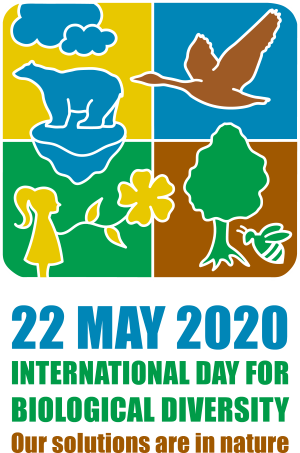
As we encroach on nature and deplete vital habitats, increasing numbers of species are at risk. That includes humanity and the future we want.
UN Secretary-General António Guterres
But loss of biodiversity threatens all, including our health. It has been proven that biodiversity loss could expand zoonoses – diseases transmitted from animals to humans- while, on the other hand, if we keep biodiversity intact, it offers excellent tools to fight against pandemics like those caused by coronaviruses.
While there is a growing recognition that biological diversity is a global asset of tremendous value to future generations, the number of species is being significantly reduced by certain human activities. Given the importance of public education and awareness about this issue, the UN decided to celebrate the International Day for Biological Diversity annually.
2020 Theme: Our solutions are in nature
As the global community is called to re-examine our relationship to the natural world, one thing is certain: despite all our technological advances we are completely dependent on healthy and vibrant ecosystems for our water, food, medicines, clothes, fuel, shelter and energy, just to name a few.
The theme “Our solutions are in nature” emphasizes hope, solidarity and the importance of working together at all levels to build a future of life in harmony with nature.
The theme will cover 3 essential topics during the week leading up to the observance: 18 May will cover the importance of knowledge and science; 19-21 May will raise awareness of the importance of biodiversity; and finally, the day of the observance, will issue a call to action.

Logo and other graphics to spread the word
Get our official logo for the observance, available in several languages, and other graphic pieces to complete our biodiversity puzzle.
2020 is a year of reflection, opportunity and solutions. It is expected, from each of us, that we will “Build Back Better” by using this time to increase the resilience of nations and communities as we recover from this pandemic. 2020 is the year when, more than ever, the world can signal a strong will for a global framework that will “bend the curve” on biodiversity loss for the benefit of humans and all life on Earth.
2020 will witness the final period of the 2011-2020 Strategic Plan on Biodiversity and its 20 Aichi Biodiversity Targets, as well as the UN Decade on Biodiversity, leading to the transitional phase for the start of other new pivotal biodiversity-related decades for the period 2021-2030: the UN Decade of Ocean Science for Sustainable Development and the UN Decade on Ecosystem Restoration; and the UN Biodiversity Summit, in order to highlight the urgency of action at the highest levels in support of a post-2020 global biodiversity framework.
Did you know?
- Current negative trends in biodiversity and ecosystems will undermine progress towards 80% of the assessed targets of 8 Sustainable Development Goals.
- Three-quarters of the land-based environment and about 66% of the marine environment have been significantly altered by human actions.
- 1 million animal and plant species are now threatened with extinction.
Free Course! Communicating the value of biodiversity
The Convention on Biological diversity and UNDP offer a free course available in English, French and Spanish about how to communicate the value of biodiversity.
Related links
Related International Days
Ecosystem integrity underlines human health and development. Human-induced environmental changes modify wildlife population structure and reduce biodiversity, resulting in new environmental conditions that favour particular hosts, vectors, and/or pathogens.


Leave a comment